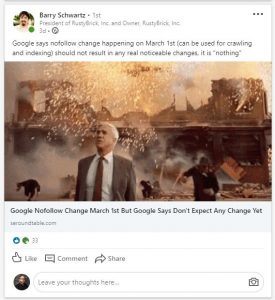 Much of my reading lately and experience is highlighting two important facts about employee goals:
Much of my reading lately and experience is highlighting two important facts about employee goals:
(1) In order for employees to be happy, their goals need to be clear and they MUST understand how their performance is measured
(2) Many companies still struggle with employee goal setting and performance management
In fact, people search for the term “employee goals” on Google an average of 720 times each month. There is still quite a bit of mystery around setting employee goals.
So how do you help set employee goals?
Before we get into helping employees set goals, there are a few things that must be in place before you can even begin thinking about employee goals.
Define Key Responsibilities
The first thing to clarify are the key responsibilities of each employee in your organization. What did you hire each employee to do? If this is not clear, it’s going to be extremely difficult to help the employee set goals. If fact, settings goals without these in place may cause you sabotage their efforts around why they were hired in the first place. A great resource on this is Growing Great Employees by Erika Anderson. Anderson lays out a nice process around the entire employee selection, hiring and training process.
Define Measurables or KPIs
In my previous blog “Do Your Employees Have Miserable Jobs” I pointed out that one of the key requirements of job happiness is measurability. Each employee must understand what good and great performance looks like and how it is measured. This is linked to their key responsibilities. For example, if you’ve hired a controller, maybe one of their key responsibilities is to prepare the financial statements for review by the executive team by the 15th of each month. It is then very clear what to measure. Did the controller generate the report by the 15th of each month? When was the report completed? If the controller is having difficulty executing on this requirement, you can dig deeper during your 1 on 1s (more on that later). I understand that things are not always black and white, but as a leader, you need to drive clarity for each employee and HOW their performance is measured and what success looks like.
Get 100% clear on the goals of the company
Now that the employee has clarity on what they were hired for and how their individual performance is measured, you need to create even more clarity around what the company is trying to accomplish (not just day to day, but longer term). You must articulate to your staff the goals of the company. What is your vision and mission? What is the company going to focus on over the next 12 months to get closer to seeing that vision realized? If you’re not clear on that we can help. If you are clear, but just haven’t communicated it to your staff, start right away. A monthly company meeting is a great way to start.
Now Let’s Start Defining Employee Goals
Once you’ve developed clarity around each employee’s key responsibilities and measurables or KPIs, and have created clarity on what the company is trying to accomplish, you can begin talking about goals. In my mind, employee goals fall into two buckets (1) personal development and (2) company development goals.
Personal Development
Each employee should be thinking about what they want to do to develop personally. What are their hopes and dreams? You might think, “how does this help the company?”. By helping the employee to develop personally, you are impacting their lives in a positive way. Helping them to grow into the person they were meant to be. This has an effect of creating a connection between the employee and the manager and in turn creates a happier employee. Everyone wins.
Company Development
Beyond just thinking about what an employee wants to accomplish in terms of personal development, employees should be thinking about how to help the company move forward in pursuit of its vision (if these two things overlap, great!).
If you’ve done your job and have articulated the company vision and goals clearly, this should be fairly straightforward. Ask, “what do you think you could do to help us achieve our goals this year?”. This is where much of the creative potential of many organizations is accessed. It’s our fault if we are not challenging our greatest asset to think of ways to help our organizations improve. I must admit that when I ran my previous company I had the same problem. At times, I thought I had all the answers when the true answers were trapped up in the minds of our employees. It’s our job as leaders to unleash that hidden potential.
Weekly Check-ins or 1 on 1s
It’s called performance “management” for a reason. It’s not called performance “set it and forget it”. We’ve all had managers who never checked in with us. Maybe, we’re the ones that are not checking in. We expect our employee to “just get it” or “sink or swim”. I definitely been there and done that.
Or maybe we manage via the “fly-by” technique where we walk by the employee’s desk and ask “how’s it going?”. That is not management. Management takes time. Management requires listening and patience.
In order to set employee goals that drive results, you need all of this in place:
- Clear key responsibilities
- Clear KPIs
- Clear company vision and goals
- Clear employee goals
- Consistent follow-up
Running and managing a company is hard work. What seems like the path of least resistance is not always the path of least resistance.
If you’d like help on developing employee goals and driving greater employee happiness, sign up for a free trial of our software.
(30)
Report Post





